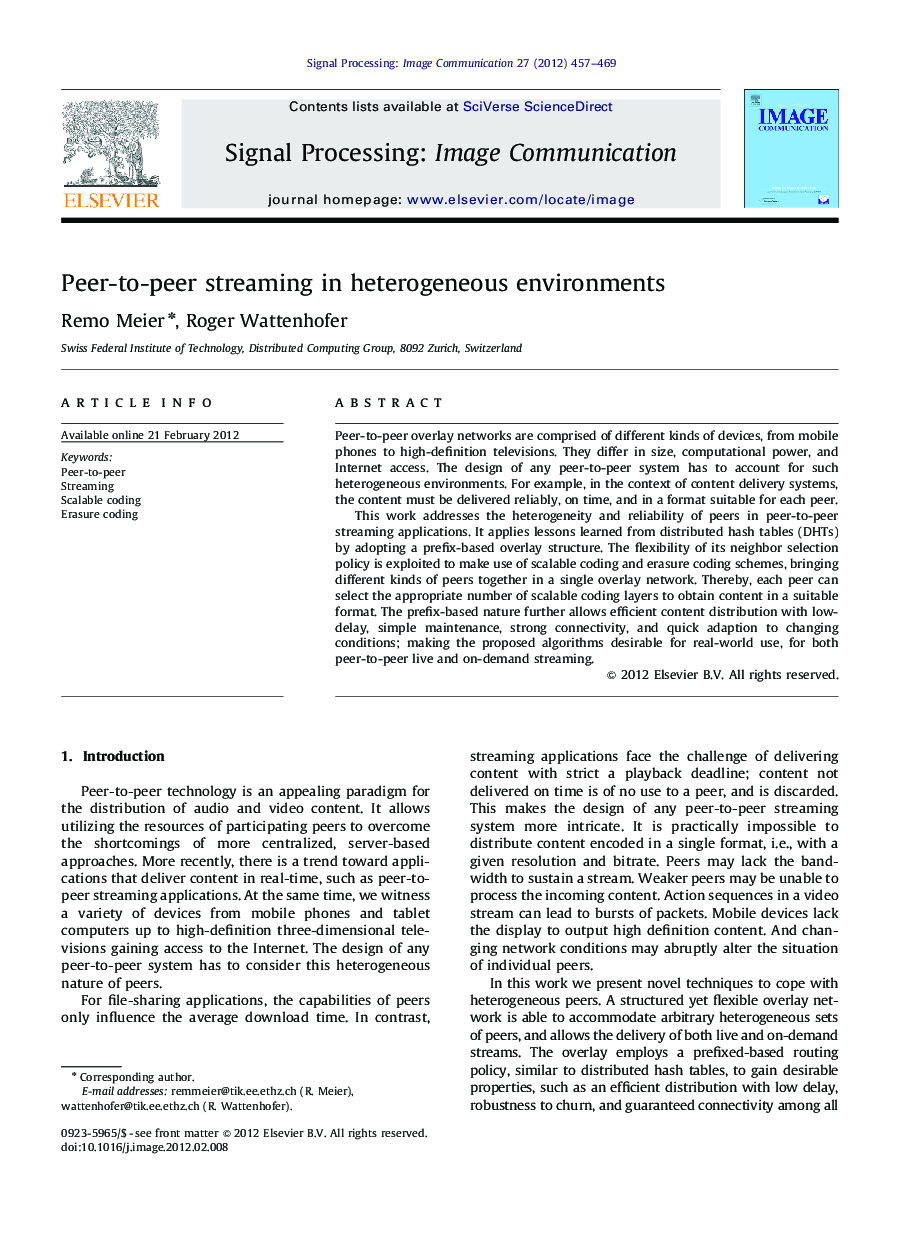| Article ID | Journal | Published Year | Pages | File Type |
|---|---|---|---|---|
| 537741 | Signal Processing: Image Communication | 2012 | 13 Pages |
Peer-to-peer overlay networks are comprised of different kinds of devices, from mobile phones to high-definition televisions. They differ in size, computational power, and Internet access. The design of any peer-to-peer system has to account for such heterogeneous environments. For example, in the context of content delivery systems, the content must be delivered reliably, on time, and in a format suitable for each peer.This work addresses the heterogeneity and reliability of peers in peer-to-peer streaming applications. It applies lessons learned from distributed hash tables (DHTs) by adopting a prefix-based overlay structure. The flexibility of its neighbor selection policy is exploited to make use of scalable coding and erasure coding schemes, bringing different kinds of peers together in a single overlay network. Thereby, each peer can select the appropriate number of scalable coding layers to obtain content in a suitable format. The prefix-based nature further allows efficient content distribution with low-delay, simple maintenance, strong connectivity, and quick adaption to changing conditions; making the proposed algorithms desirable for real-world use, for both peer-to-peer live and on-demand streaming.
